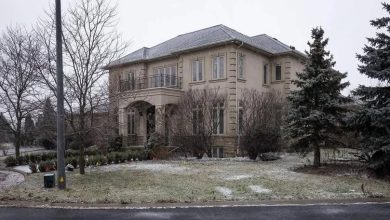Uncategorized
Abandoned grandeur: The fading beauty of the once lavish abode Sutton Scarsdale Hall
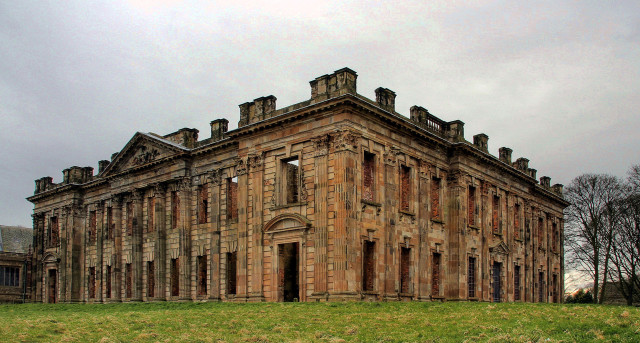
Sutton Scarsdale Hall is a Grade 1 listed Georgian ruined stately mansion in Sutton Scarsdale, Derbyshire, close outside of Chesterfield. The old Hall was part of Wulfric Spott’s Saxon estate, which he donated to Burton-on-Trent Abbey when he died in 1002.
Roger de Poitou possessed the estate according to the Domesday Book. King Henry III granted Peter de Hareston the Lordship of Sutton-in-the-Dale in 1225, but by 1401, it had been acquired by John Leke of Gotham.


King Henry VIII made a later John Leke a knight. King James I named his son Francis Leke a Baronet in 1611, and King Charles I raised him to Earl of Scarsdale in 1640.
When the English Civil War broke out, Leke supported the Cavaliers, and the construction of the Hall was fortified, especially because Bolsover Castle on the opposite slope swore devotion to the Roundheads.
When a Parliamentarian army of 500 soldiers headed by Sir John Gell besieged the estate, Leke fought until the house was attacked and he was captured.
After the land was captured by Oliver Cromwell’s army, a forfeiture fine of £18,000 was imposed and paid for Leke’s support of the imprisoned King Charles.
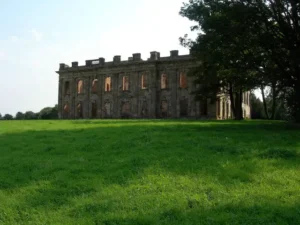

King Henry VIII made a later John Leke a knight. King James I named his son Francis Leke a Baronet in 1611, and King Charles I raised him to Earl of Scarsdale in 1640.
When the English Civil War broke out, Leke supported the Cavaliers, and the construction of the Hall was fortified, especially because Bolsover Castle on the opposite slope swore devotion to the Roundheads.
When a Parliamentarian army of 500 soldiers headed by Sir John Gell besieged the estate, Leke fought until the house was attacked and he was captured.
After the land was captured by Oliver Cromwell’s army, a forfeiture fine of £18,000 was imposed and paid for Leke’s support of the imprisoned King Charles.
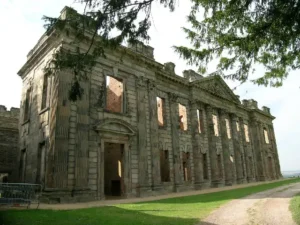
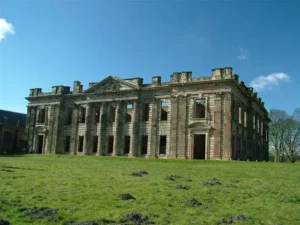
When Richard’s father died in 1792, he inherited a major portion of his father’s inheritance, and it was at this moment that he chose to sell most of his cotton mill operations and focus on property and banking.He accumulated a great fortune in this field, and when he died in 1843, he was believed to be the richest commoner in England.
His son Robert Arkwright (1783-1859) inherited Sutton Scarsdale Hall after his father died. Much to his family’s chagrin, Robert married the famed theatrical family’s actress Frances Crawford Kemble (see image at left) in 1805.
His elder brother Richard wrote to their father immediately after the marriage, expressing his hope that the marriage was not legitimate and suggesting that Robert would “soon repent of not following your and Mother’s counsel.”
The family, however, did not need to be concerned about Robert’s choice of marriage because Frances became a delightful hostess and quickly established friends in the nobility.
She was a talented composer, and many of her songs are still available today. Her aunt was the famed actress Sarah Siddons, who frequently dined with Robert’s parents in London.When Robert Arkwright died in 1859, his son, the Reverend Godfrey Harry Arkwright, acquired Sutton Scarsdale Hall. Godfrey was born in 1814 and educated at Eton and Trinity College, Cambridge.
He had two wives: Frances Rafela Fitzherbert, who died in 1856, and Marian Hilary Adelaide Pellew. He had three children, four boys and two girls, with each of his wives. Francis Arkwright, his eldest son, acquired Sutton Scarsdale after his father Godfrey died in 1866.
Francis Arkwright was born in 1846 and attended Eton College. He married Louisa Milbank, the daughter of Mr. Henry Milbank and Lady Margaret Milbank, in 1868.
Unfortunately, his wife passed away in 1873. They only had one daughter. He later married Evelyn, the daughter of William, 3rd Viscount of Sidmouth, although the couple never had children.
Source: Sutton Scarsdale Hall Francis was elected to the House of Commons in 1874, a seat he maintained until 1880. He relocated to New Zealand in 1882, leaving Sutton Scarsdale Hall in the care of his cousin William Arkwright.
When Francis died in 1915, he had no male heirs, thus William inherited the estate.
William Arkwright was born in the year 1857. Major William Arkwright was his father, and Fanny Susan Thornewill was his mother. He married Agnes Mary Somers Cocks, the daughter of the Hon. John James Thomas Somers Cocks, in 1884.
William was a dog breeder who wrote a book called “The Pointer and His Predecessors.”
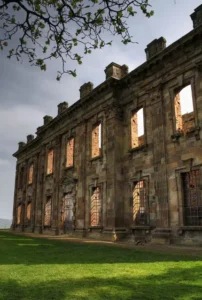

After many years of disrepair, the estate was purchased in November 1919 by a group of local merchants who asset-stripped the home, including removing the roof in 1920.
Some portions of the structure were transferred to the United States, where one room’s oak paneling was purchased by newspaper magnate William Randolph Hearst, who intended to use it at Hearst Castle. Pall Mall Films purchased the paneling after many years in storage in New York for use as a set in their many 1950s productions.
Another pair of panels is now on display at the Philadelphia Museum of Art. Sir Osbert Sitwell of Renishaw Hall purchased the land in 1946 with the goal of preserving the surviving shell as a ruin. Scarsdale Hall is presently in the care of English Heritage and is open to the public.




